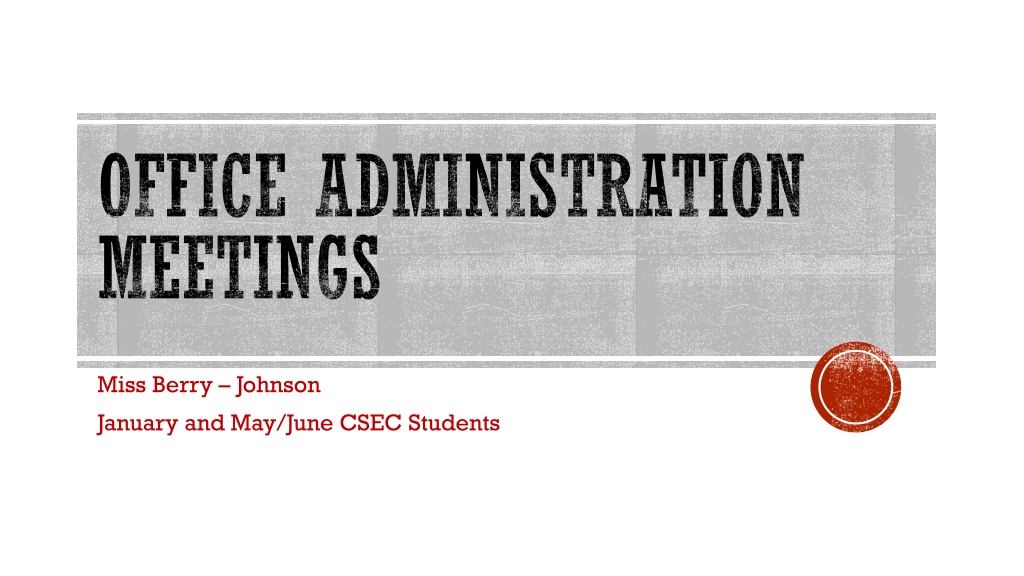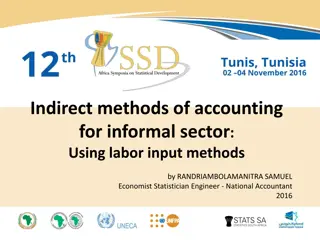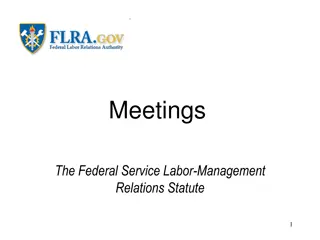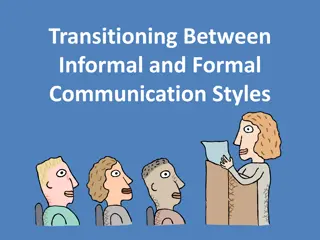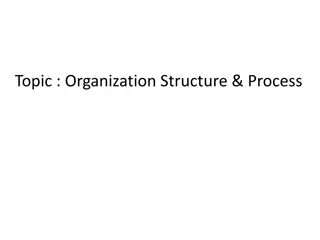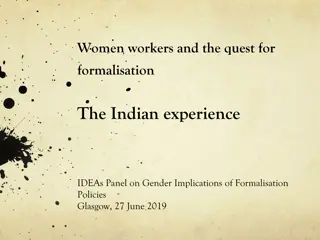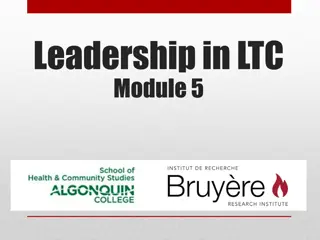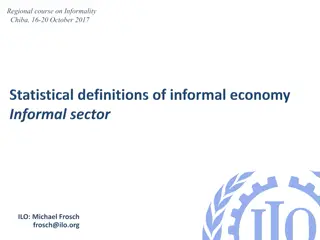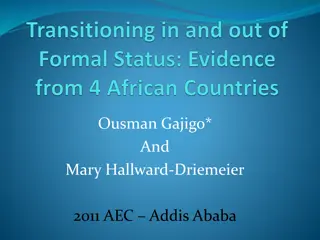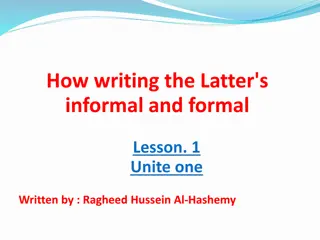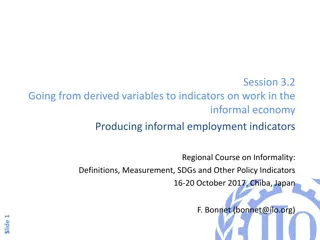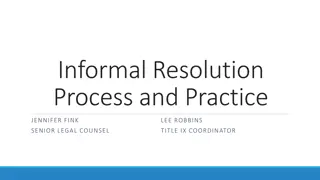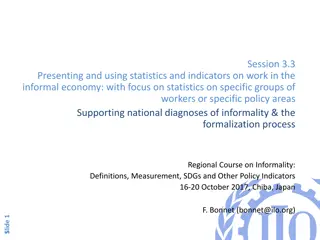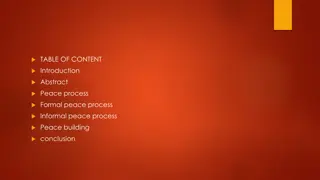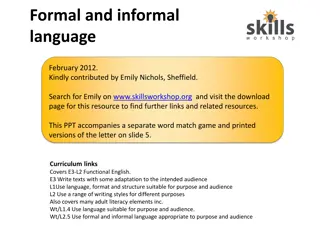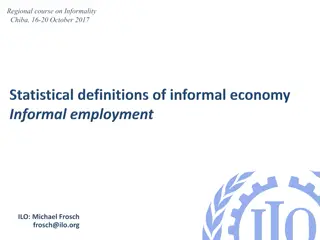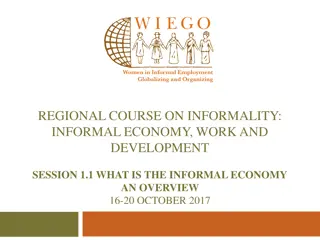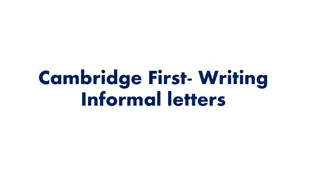Understanding Types of Formal and Informal Meetings in Office Administration
Explore the different types of meetings in office administration, including formal ones like General Meetings, Annual General Meetings, Extraordinary General Meetings, and Committee Meetings, as well as informal ones like Staff Meetings and Departmental Meetings. Each type serves a unique purpose in facilitating communication, decision-making, and collaboration within an organization.
Download Presentation

Please find below an Image/Link to download the presentation.
The content on the website is provided AS IS for your information and personal use only. It may not be sold, licensed, or shared on other websites without obtaining consent from the author. Download presentation by click this link. If you encounter any issues during the download, it is possible that the publisher has removed the file from their server.
E N D
Presentation Transcript
OFFICE ADMINISTRATION MEETINGS Miss Berry Johnson January and May/June CSEC Students
MEETING an assembly of people for a particular purpose, especially for formal discussion
TYPES OF MEETINGS: FORMAL General Meeting - A general meeting is open to members of the organization. These meetings are usually held monthly or quarterly to present the opportunity for staff to liaise and/or communicate with other members. Annual General Meeting (AGM) - An Annual General Meeting is a statutory meeting held once per year. Statutory meetings are held by law i.e legally required. It is very important meeting of shareholders to allow them to discuss their company s annual report and accounts, elect directors to manage the company and to agree on dividend payout recommended by directors.
TYPES OF MEETINGS: FORMAL Extraordinary General Meeting (EGM) - This is a meeting that can be called at any time by the directors or shareholders to discuss some special issues or unexpected event which requires the consent of all members. For example, an EGM might be called to approve some special action such as to purchase another company or to make a change to a special arrangement agreed at a previous meeting. Board Meeting - Board meetings are held throughout the year as required by the company s regulation. These meetings are convened to decide on important policies, approve financial and other management decisions. They are attended by company directors and company secretary.
TYPES OF MEETINGS: FORMAL Committee Meeting - These are meetings held with small groups to make decisions about a specific issue such as a proposed policy or organizing a social event. Individual members who are not regular members of the organization may be invited to serve on the committee because of their expertise. Statutory Meeting - A statutory meeting is one that is required to be held by law. For example, an Annual General Meeting.
TYPES OF MEETINGS: INFORMAL Staff Meeting - Staff meetings are less formal but play an important part in the operation of an organization. They are held to inform staff of developments and sharing communicating the way forward in light of management concerns. Staff meetings are used as a forum for staff to express their feelings and opinion on company policies and procedures. Departmental Meeting - These meetings are attended by staff from particular departments. For example, staff from the marketing may be called upon to attend a department meeting to discuss matters affecting the department or to convey decisions made by the board of directors or senior managers. The meeting will be concerned with deciding on strategies to be used to carry out the department s toll in the overall aim of the organization.
THE IMPORTANCE OF MEETINGS AND THEIR PURPOSE Meetings are a useful form of internal communication when it is necessary to hold discussions between groups of persons. They allow for the exchange of ideas and collective efforts to solve problems and formulate policies. Meetings are held for the purpose of: Passing information on to others Getting information, advice and ideas from others Reporting on actions taken Negotiating problems
ORGANIZATION OF MEETINGS Before the Meeting Set up a meeting folder to collect items related to the meeting e.g. list of those attending, the agenda, notes and materials to be distributed. Book the meeting room as soon as you are aware of the date and time of the meeting Use your reminder systems e.g. calendar, diary, tickler file system Prepare the agenda after consultation with the chairperson about the items to be included Notify the meeting participants as soon as possible as to when and where the meeting will take place and the purpose of it. Organize materials and equipment e.g. paper, pencils, projector, handouts etc. Prepare the meeting room by ensuring it is comfortable and adequately arranged to fit the style of the meeting.. Lay out equipment and materials before the participants arrive.
ORGANIZATION OF MEETINGS During the meeting Ensure that the room is properly ventilated. Have stationery for members Place meeting in progress sign on the floor Ensure that members sign the attendance register Write the minutes of the meeting Assist the chairperson
ORGANIZATION OF MEETINGS After the meeting Prepare the draft of the minutes for the chairman to review Ensure that there is a follow up on matters discussed at the meeting Ensure that the room is left in order Remove signs Distributes minutes of meeting
OFFICIAL SEATING PROTOCOL The presiding officer should sit to the immediate right of the podium facing the audience. To the immediate left of the podium should sit the Chairperson, and to his/her left, the Secretary. Any special guest should sit to the immediate right of the presiding officer, and then the vice president (or next in line to preside in the absence of the presiding officer), to their immediate right. All other officers or committee chairs may be seated in alternating order of hierarchy.
ROBERTS RULE OF ORDER GOVERNING MEETINGS The Roberts Rule of Order is a set of rules or norms that governs the conduct of meetings. It allows for everyone to be heard and for decisions to be made without confusion. The norms usually follow the following order: i. Establishing a Constitution and Bylaws for the organization. ii. Structure of the meeting Agenda and debate. iii.Motions; including making, seconding, debating, modifying and amending motions. iv. Sufficient majority and simple majority and which decisions are appropriate to them. v. Establishment of a quorum. Definition of membership. Voting rights of presiding officer and voting procedures.
ROLES AND FUNCTION OF PERSONNEL ASSOCIATED WITH MEETINGS Chair This person is responsible for the correct conduct of the meeting. The Chair presides over the meeting to ensure full participation of members, and that the conventions of the meeting are followed. Secretary The Secretary is responsible for sending out notices to members and preparing the agenda. He/she is also responsible for ensuring the meeting room is prepared to include seating; refreshments and writing material are arranged. The secretary is responsible for recording and transcribing the minutes, as well as dealing with correspondence and ensuring that decisions taken at the meeting are carried out and actioned.
ROLES AND FUNCTION OF PERSONNEL ASSOCIATED WITH MEETINGS Treasurer This persons is responsible for all the financial matters of the meeting, it involves ensuring payments due and owed are received and paid on time, maintaining adequate cash flow, and preparing balance sheets and financial matters. Proxy A proxy is a member who is authorized to vote on another member s behalf if that member is unable to attend a meeting to vote. However, this must be done in writing and in accordance with the regulations of the organization. Ex-officio This is a person who is a member of a meeting due to reason of his/her office or official position. For example, a person from a parent company may be a member of a meeting from one of the parent company s subsidiaries.
TYPICAL ORDER OF BUSINESS Call to Order Opening Exercises, if applicable Roll Call/Determination of a Quorum Adoption of the Agenda Reading and Approval of the Minutes of the Previous Meeting Reports of Officers Reports of Standing Committees Reports of Special (Ad hoc) Committees Special Orders Unfinished Business and General Orders New Business Adjournment
IMPORTANCE OF MINUTES Minutes are the official record of a meeting. It details the decisions taken by the members. Copies of the minutes should be produced as soon as possible after the meeting as what took place in the meeting is still fresh in your mind. It should be proofread by the chairperson before it is distributed to ensure there are no errors or omissions.
FOLLOW-UP PROCEDURES Filing and indexing of minutes A copy of the minutes should be filed once they have been checked by the chairperson. They should be indexed so that they can be easily located for future reference. Acting on decisions taken at the meeting You should implement any action that you were instructed to carry out by the meeting participants. If the instructions were given to other persons check to ensure that they were being carried out.
FOLLOW-UP PROCEDURES Circulation of action sheet Action sheets may need to be issued to those who were not present at the meeting to advise them of the tasks they are expected to do. As such, you should circulate the action sheet to the members both those who were present and absent. Circulation of minutes This is done after the minutes have been transcribed, proofread and signed off on by the chairperson.
NOTICE OF MEETING A notice is used to inform members that there will be a meeting and also to let them know the date, time and venue of the meeting.
AGENDA An agenda is a list of items to be discussed during a meeting. It can be said to be a tool or instrument used to control the meeting.
CHAIRPERSON'S AGENDA A chairperson s agenda contains more information than the ordinary agenda. A wide space is usually provided on the right-hand side of the paper for the chairperson to make notes which will assist him/her in the conduct of an effective meeting.
MINUTES OF A MEETING Minutes of a meeting is the term given to the written record of a business discussion at a meeting.
MEETING TERMINOLOGIES Companies Act of relevant country This varies from one country to another. It is an act of Parliament which provides for the incorporation, regulation and winding up if trading companies. It states the legal limits within which companies may do their business, and how shareholders, directors, employees, creditors and other stakeholders (consumers. The community and the environment) interact with one another under the internal rules of the organization.
MEETING TERMINOLOGIES Management structure of companies Management refers to the act of organizing people to achieve desired goals and objectives. Management involves planning, organizing, staffing, leading, directing and controlling, for the purpose of achieving the organization's goals. Corporate records A business record is a document that records business dealings e.g. minutes of meetings, employment contracts, accounting data and some memorandums and annual reports. These documents must be easily retrieved when required.
MEETING TERMINOLOGIES Officers, shareholders of companies A company is a legal entity which is granted a charter recognizing it as a separate entity from its owners. This means that it can sue and be sued in its title name. An important feature of a company is the status of limited liability. Having limited liability means that if a company fails or goes bankrupt, the shareholders will only lose their investment but not their personal assets. However, officers and employees will lose their positions but will not be liable for debts that are owed to the company s creditors.
MEETING TERMINOLOGIES Meeting proxies Meeting proxies are procedures that are to be followed for the delegation to another member to vote in his or her absence. The person designated to vote on behalf of another person is called a proxy, and the person who designates the proxy is called the principal. The identity of the proxy and the principal must be proven (authenticated) because the use of the process can be very influential.
MEETING TERMINOLOGIES Ad hoc This is committee established for a specific purpose (to carry out a task) but cease to exist when the task is completed Verbatim This means word for word; for example, a verbatim minutes is a word for word record of a report or discussions verbally presented. Quorum The quorum of a meeting is the minimum number of people required to be present before a meeting can take place. For example, if the organization's rule is that 50% membership is required for a meeting and there are 10 committee members, 5 are required to form a quorum; if a committee has 7 members, 4 will be required to form a quorum.
MEETING TERMINOLOGIES Casting vote This is the vote given to the Chair of a meeting to arrive at a final decision when votes are tied or equally divided. However, the chairperson may choose not to exercise this right and suspend or adjourn the meeting until another time; a wise chairperson will always exercise the casting vote to preserve the status quo. Adjourn This means to place a meeting on hold until a later date. Postpone To postpone a meeting means to put it off or defer` until a later time.
MEETING TERMINOLOGIES Cancel - This means to call off a meeting without the expectation of conducting it at a later time. It also means to put off indefinitely. Proposal This is a formal suggestion put forward by a member of the meeting for consideration. Motion This is a formal proposal put forward by a member of a meeting. Resolution A resolution is a formal decision taken at a meeting by means of a vote. A resolution is reached when members unanimously or the majority accept a motion.
